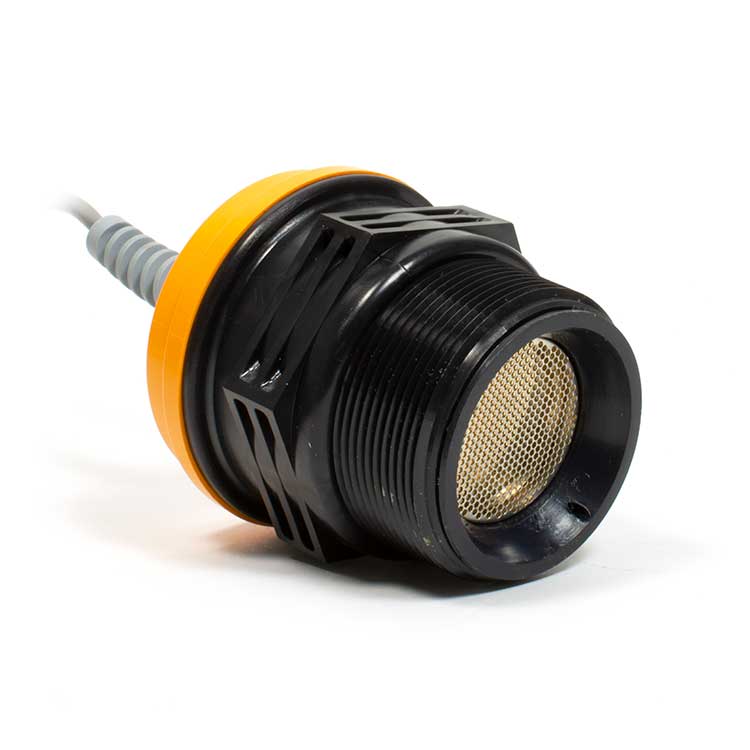Ultrasonic sensors for level measurement come in a variety of ranges. They can be from a few inches to 50 feet. Picking the right range for your application is very important because it directly effects the overall performance of the sensor. At Automation Products Group, Inc. (APG), we offer several ultrasonic sensors with different ranges.
For example, you wouldn’t want to use an ultrasonic sensor with a 50 foot range on a tank that’s only 6 feet tall. This is overkill, and you probably spent more than needed. In addition, with a 1.5 foot blanking distance, the sensor wouldn’t detect the liquid above ¾ full.
So, when you’re deciding which range is best for your application, consider the following factors:
Sensing Distance
Obviously, you’ll need to know the maximum distance you’ll require the ultrasonic sensor to detect. A general rule is use a sensor that covers the max distance plus 25% after that. This ensures that the pulses generated are strong enough to reach the target and return to the sensor. So for a 20 foot water tank, a 25 foot ultrasonic sensor would be ideal.
Blanking Distance
The blanking distance is the area within the first few inches (or feet) of the transducer where targets are unable to be measured. Typically, the longer the range of an ultrasonic sensor, the longer the blanking distance. For example, our 50 foot ultrasonic sensors, the IRU-3430 series, have a 1.5 foot blanking distance. While our IRU-5000 series, on the other hand, have a range of 79 inches, and only a 4 inch blanking distance.
Sometimes, we have customers that require both a longer range ultrasonic sensor, and a short blanking distance. In cases like this, standpipes, special programming, and other adjustments may be required.
Soft vs. Hard Targets
Finally, you’ll need to consider the type of target you’ll be sensing. Ultrasonic sensors work best with hard targets, or targets with good reflective characteristics. These are targets that are flat and smooth like most liquids. Soft targets, meanwhile, have poor reflective characteristics. Examples of soft targets may include solids like sand or grains.
For example, an ultrasonic sensor is placed in a gravel pit to calculate the volume of rocks inside the pit. With a soft target like this, the ultrasonic waves often are deflected or scattered. By generating a stronger sound wave, enough of the return echo is detected by the sensor.
To do this, the general rule is to use a sensor with a range that’s double the required sensing distance. The rocks in the gravel pit were about 25 feet away, so our 50 foot ultrasonic sensor was the best fit. With the stronger pulses being generated by the IRU-3433, the volume of rock inside the gravel pit is determined.
Using ultrasonic sensors on soft targets present a plethora of challenges, so before you purchase an ultrasonic sensor for this application type, we recommend that you speak with one of our application engineers first. Don’t hesitate to contact us if you have any questions about selecting an ultrasonic sensor.
WRITTEN BY

Sami T.
Sami Thompson is APG’s Marketing Technical Writer and has been with the company since 2022. With a master’s degree in English from Utah State University and a 40-page thesis publication under her belt, Sami has a demonstrated strong writing background. In her free time, Sami enjoys reading and birdwatching.


